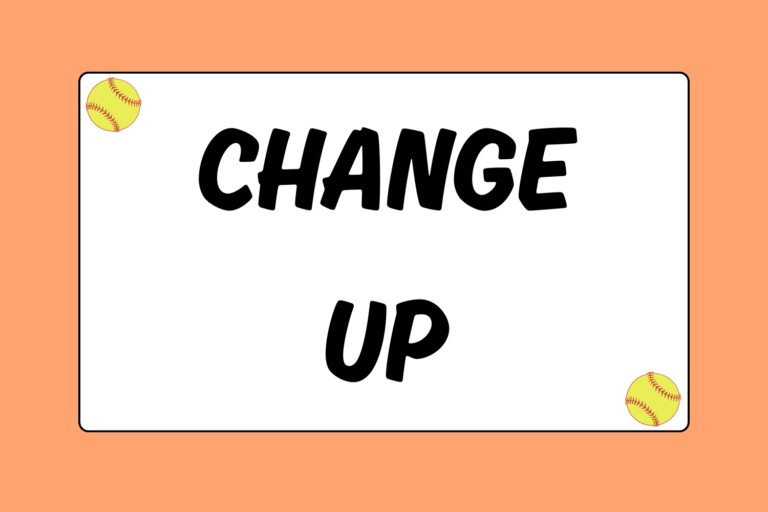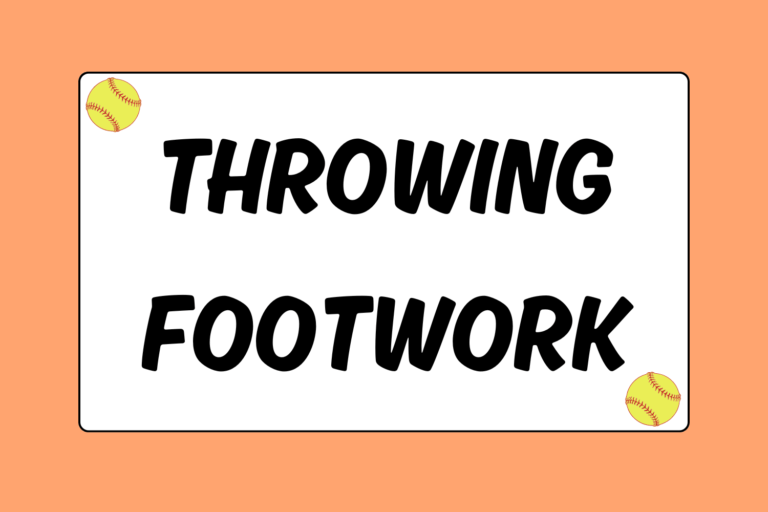Every softball slapper knows that the most important aspect of successful slapping is the footwork — and even more importantly, the timing of the footwork. In Sportmentary’s guide, Timing the Three-step Slapping Approach in Softball, you learned the three-step approach. But that approach isn’t for everyone.
If you feel like the three-step approach is too much movement, causing your head to bounce around and your eyes to wander, don’t fret! There is an alternative, and that is the two-step approach. Follow along carefully as this guide teaches you how to time the two-step approach to slapping.
The Timing
The approach for this footwork is very similar to that of the three-step approach. Slappers using this particular footwork will start somewhere in the middle of the box.
Slappers could start at the back of the box, but once they finish the footwork, they will still be inside the box — not at the front edge. Starting somewhere in the middle allows you to be out of the box immediately after making contact with the pitch.
Below is a breakdown of how to time this approach off the pitcher’s motion (of course, depending on her speed, it may be altered):
- The pitcher gets on the mound and brings her hands together: The slapper is calm and collected, preparing for a strike (no slapper should be expecting a ball). She is light on the balls of her feet, and her bodyweight is equally distributed between both legs.
- The pitcher starts throwing her arm backwards: The slapper is breathing confidently and staying calm. The slapper may start to wiggle her hips (if that’s her timing mechanism) or slowly shift her weight back to her back leg as a timing mechanism.
- The pitcher throws her arm forward, and her body lunges forward at the plate: The slapper is watching her arm closely. If the slapper uses the lift-step for timing, this is when she’ll lift up her front foot. Otherwise, all her weight (or her hip wiggle) will have been shifted to her back leg. She is poised and ready to go forward.
- The pitcher’s arm reaches a point somewhere between the top of her windmill and her hip: The slapper starts her motion and her back foot steps over and across her front foot. This is the step that will generally change when the pitcher’s speed is faster or slower than average:
- For a slower pitcher, you may have to wait until her arm is at (or very near) the hip to begin your motion.
- For a quicker pitcher, you will have to start earlier, perhaps when her arm is at the top of her windmill. Watch her motion while you are in the on-deck circle to get your timing.
- The pitcher releases the pitch at her hip: The slapper’s back foot has stepped over and across her front foot, and her front foot is stepping forward (from behind her back leg). Her hands are starting their motion (the feet lead the hands).
- The ball is approaching the plate: The slapper’s front leg finishes its follow-through and her hands are in full motion.
- Contact: Contact is made at the slapper’s back hip — while her front leg is following through. With an inside-out¬-swing, the slapper slaps the ball through the 5/6 hole (between third base and the shortstop). All the while, her feet are moving. She does not ever stop her feet in the box (unless the pitch is a change-up).
- Run: After she slaps the ball, the slapper rushes down to first base to beat out the throw.
Hot Tip: Sneak in a Drag Bunt!
This footwork is not limited only to slapping. As a surprise, you can also use it to sneakily drop a bunt down. If you do this, start at the front of the box. As the ball approaches the plate, step your back leg forward, and bunt the ball as your front leg is following through. The instant you make contact, run
Find Your Rhythm!
There is no better feeling than solid contact when you are slapping. Solid contact, though, depends on timing. If you are too early, you will likely jam yourself and hit a dribbler to second base off the handle of your bat. If you start moving your feet too late, you’ll probably make contact at the tip of your bat — another weak hit. Hitting the ball off the sweet spot of your bat requires perfect timing. And it will take more than just reading this guide to fully grasp the timing; you have to practice!
The more you practice, the more comfortable you will be in the box, and the more likely you are to find your rhythm. With rhythm comes confidence and success. Before long, you won’t even have to think about your footwork. Off the pitcher’s motion, it will all come naturally.





